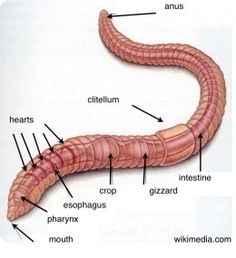Red Wiggler Worms Demystified: Unlocking the Keys of Vermiculture for Greener Living and Nutrient-Rich Dirt
In the world of sustainable techniques for improving soil quality and advertising eco-conscious living, red wiggler worms play a crucial yet frequently neglected role. These modest animals possess the amazing capacity to change organic waste right into nutrient-rich castings that work as a powerful natural plant food. By delving right into the globe of vermiculture, one can reveal a variety of benefits that extend much beyond traditional composting approaches. Recognizing the ins and outs of caring for these worms, maximizing their atmosphere, and using their castings can cause a greener way of living and healthier dirt for plants to flourish.
The Function of Red Wiggler Worms
Red Wiggler worms play a vital function in composting systems by successfully damaging down natural matter into nutrient-rich castings. These voracious eaters take in a variety of natural materials, such as kitchen area scraps, backyard waste, and paper items. As they feed, the worms' gastrointestinal procedures break down the raw material right into a penalty, dark, and nutrient-dense product called worm spreadings or vermicompost.
The castings generated by Red Wiggler worms are highly advantageous for dirt health and plant growth. They are rich in essential nutrients like nitrogen, phosphorus, and potassium, which are important for sustaining healthy plant advancement. Furthermore, worm castings consist of valuable germs and enzymes that assist enhance dirt framework, boost water retention, and improve nutrient uptake by plants.
Advantages of Vermicomposting

It boosts soil structure, enhances dirt oygenation, and enhances dirt moisture retention. Vermicompost likewise enhances the dirt with necessary nutrients like nitrogen, potassium, and phosphorus, advertising plant growth and overall soil fertility.
Furthermore, vermicomposting assistances lasting horticulture techniques by offering a chemical-free and all-natural choice to artificial plant foods. Red Wiggler Worms. This ecologically friendly method not just improves the dirt yet also helps decrease dependence on damaging chemicals, promoting a greener and a lot more lasting means of horticulture
Establishing a Worm Container
When establishing a worm container for vermicomposting, proper setup is vital to guarantee the success of the composting process. The initial step in setting up a worm container is choosing an appropriate container. This can be a plastic container or wood box that supplies sufficient space for the worms to walk around and has correct water drainage openings to avoid waterlogging. Next off, a bed linen product such as shredded newspaper, cardboard, or coconut coir ought to be included in the container. This bed linens supplies a comfortable atmosphere for the worms and assists maintain moisture degrees.
After adding the bedding, present the red wiggler worms to the container. The worms ought to after that be supplied with food scraps such as fruit and vegetable peels, coffee premises, and eggshells.
On a regular basis keep an eye on the wetness levels and temperature level in the worm container to ensure optimum conditions for the worms. With appropriate setup and upkeep, the worm container will efficiently convert organic waste right into nutrient-rich compost for your plants and yard.
Gathering Worm Spreadings
To effectively accumulate nutrient-rich worm castings from your vermicomposting system, a methodical harvesting approach is essential. When it comes time to harvest the worm castings, there are a couple of key steps to comply with to ensure an effective process. To start with, stop adding fresh food scraps away of the worm container for a number of weeks prior to collecting. This urges the worms to migrate to the side with fresh bed linen and food, making it less complicated to scoop out the castings from the other side.

Troubleshooting Common Issues
Recognizing and dealing with common obstacles that might emerge during the vermicomposting procedure is essential for maintaining a effective and healthy and balanced worm bin. One common concern that vermicomposters experience is overfeeding. Adding excess food scraps can result in a buildup of moisture and level of acidity in the worm container, potentially hurting the worms. To avoid this, feed the worms in moderation, guaranteeing that the food scraps are sufficiently broken find more info down before adding extra. One more problem is unpleasant smells originating from the worm bin. Foul scents suggest anaerobic conditions, generally triggered by overwatering or poor ventilation. To treat this, readjust the wetness degrees by adding dry bed linen materials like shredded paper or cardboard and rise oygenation by turning the bed linens regularly.
In addition, if the worm population is decreasing or the worms show up unhealthy, it can be due to ecological stressors such as extreme temperature levels or pH levels. Checking these elements and making essential adjustments is crucial for the well-being of the worms. By repairing these usual problems without delay, vermicomposters can make certain a successful and smooth vermicomposting process while preserving a growing worm population.

Conclusion
In conclusion, red wiggler worms play a critical duty in vermiculture by damaging down organic matter right into nutrient-rich soil. Setting up a worm container is necessary for successful vermiculture, and harvesting worm spreadings offers important garden compost for horticulture.
As they feed, the worms' digestion processes damage down the natural issue right into a penalty, dark, and nutrient-dense product recognized as worm castings helpful hints or vermicompost.
The spreadings created by Red Wiggler worms are extremely helpful for dirt health and wellness and plant development. Including excess food scraps can lead to a buildup of dampness and acidity in the worm bin, potentially harming the worms.In addition, if the worm population is decreasing or the worms show up harmful, it can be due to environmental stress factors such as severe temperature levels or pH levels. Setting up a worm bin is crucial for successful vermiculture, and gathering worm spreadings supplies useful compost for horticulture.